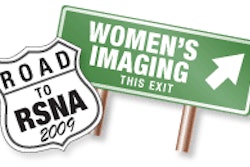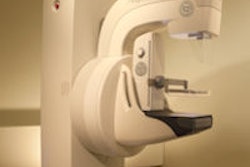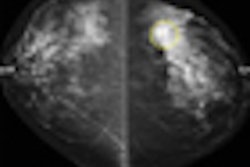Breast MRI and film-screen mammography are complementary tests for early breast cancer detection, according to a new study published in Academic Radiology.
Researchers from Massachusetts General Hospital's Institute for Technology Assessment in Boston studied the correlation between film-screen mammography (FSM) and breast MRI to determine how effective breast MRI can be when used as an adjunct to mammography (Acad Radiol, November 2009, Vol. 16:11, pp. 1323-1328).
"Although additional tests often increase the diagnostic information available over that from a single test alone, the direction and extent that two diagnostic tests are correlated affects the diagnostic gain achievable when the tests are combined," wrote Dr. Janie Lee and colleagues. "To better understand the potential diagnostic gain related to using breast MRI and mammography for screening, we ... examined the extent of correlation [between the two]."
Lee and colleagues reviewed seven published studies on multimodality breast cancer screening that reported the sensitivity of mammography and MRI for breast cancer diagnosis, both alone and in combination. Positive findings on either test made the two-test combination to be considered positive.
The team looked for the following data from the studies:
- Study population characteristics
- Number of screening rounds
- Mean number of screening exams per patient
- Criterion for a positive screening examination
- Reference standard confirmation of breast cancer diagnosis by histopathologic exam and confirmation of negative breast cancer status by clinical follow-up
- Data required to calculate the sensitivity of mammography alone, MRI alone, and both combined
Of the studies included in the analysis, the correlation between FSM and MRI was positive in three, negative in two, and not identified in two. Correlation coefficients ranged from -0.38 to 0.18; in six of the seven studies, the 95% confidence interval for the correlation coefficient included 0.0, which indicates no significant correlation, according to the authors.
The two tests are independent, and additional, different diagnostic information is gained when mammography and MRI are used together, they wrote. "[Our] results also suggest that if MRI were to be combined with another x-ray-based breast imaging modality, such as digital mammography or digital tomosynthesis, those additional two-test combinations would likely demonstrate little or no test correlation."
By Kate Madden Yee
AuntMinnie.com staff writer
November 6, 2009
Related Reading
Breast MRI can resolve mammography findings, but use with caution, October 6, 2009
Patient age, clinical indication need to be considered in breast MRI, September 18, 2009
CAD enhances breast MRI specificity, September 17, 2009
Breast lesion kinetic curves inconsistent across MRI systems, August 25, 2009
Kinetic information identifies MRI-detected breast tumors, August 19, 2009
Copyright © 2009 AuntMinnie.com



















